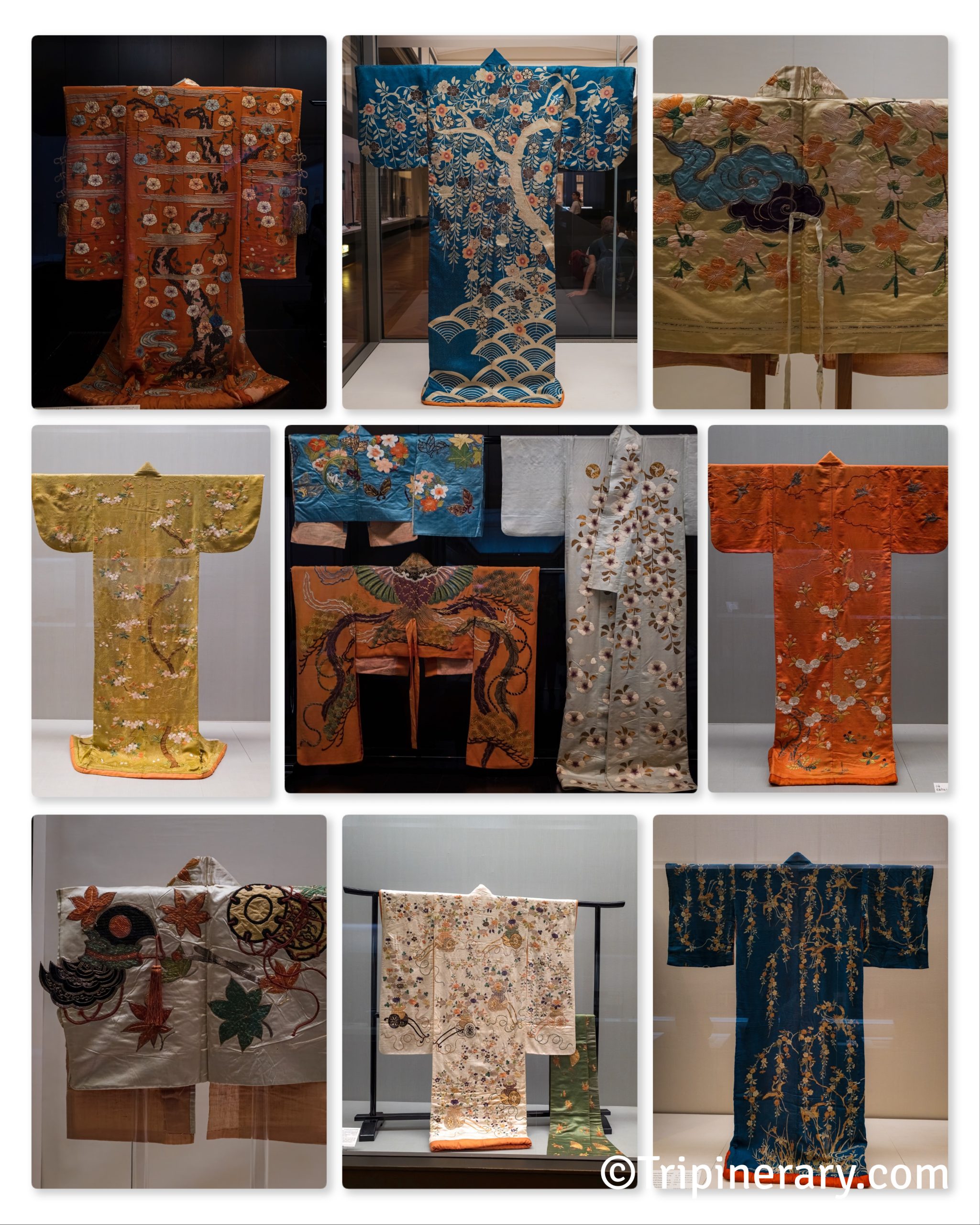Kimono
Kyoto, Japan's cultural heart, mesmerizes with its centuries-old temples, serene gardens, and traditional tea houses, preserving a captivating glimpse of ancient Japanese heritage. GalleryKyoto, the ancient capital of Japan, is a city of mesmerizing beauty. Immerse yourself in the rich history and culture as you explore the stunning temples and shrines. Wander through the charming streets lined with traditional wooden houses and experience the tranquility of the Japanese gardens. Indulge in delicious local cuisine and shop for unique handicrafts and souvenirs. Kyoto is a place that will capture your heart and leave you enchanted.
Here’s how we spent our first time in Kyoto
Day 5
- <8.00 AM to 11.00 AM> Take the 8:03 AM train from Tokyo to Kyoto
- <11.00 AM to 12.00 PM> Start your trip with visit to Toji Shrine (1 km from station)
- The pagoda of Toji-in is one of the tallest in Japan – and its five stories represent the various elements fire, water, earth and air- the rings at top represent the nine spheres of Heaven
- Cost: USD$5
- Toji Temple, or East Temple, was built at the start of the Heian Period in the late 700’s. This 5 story pagoda is made from wood and is another famous UNESCO World Heritage Site in Kyoto. Other notable buildings in the complex include Kondo Hall. Reconstructed in the early Edo Period after a fire in 1486 destroyed the original. It is considered one of the Toji Temple Complex’s original buildings. Destroyed in the same fire is Kodo Hall, which sits next door. Kodo Hall served as the lecture hall in the Toji Temple area. The wooden Toji Tower itself stands 57 meters tall, the tallest in all Japan. You can get to Toji Temple via the Kintetsu Kyoto Line and is a 5-minute walk from Toji Station. During cherry blossom season, the grounds around the temple are overflowing with the beautiful flowers as well!
- <12.00 PM to 1.00 PM> Grab Lunch near the shrine.
- <1.00 PM to 2.00 PM> Head to Rengeoin Sanjusangendo (3 kms from To-Ji)
- Originally named Rengeoin Temple, this site has taken on the name of the great hall within which houses 1001 life-sized, wooden statues of Kannon, the goddess of mercy.
- <2.00 PM to 6.00 PM> Fushimi Inari Shrine (3 kms from Rengeoin Sanjusangendo)
- Fushimi Inari Shrine is usually the number one attraction -in all of Japan! Dedicated to the Shinto God of Rice, Inari, thousands of bright torii gates lead visitors from the main shrine up Mt Inari
- This popularity means that it is busy, very busy. This trail winds up the sacred Inari Mountain and eventually gives off some beautiful views of Kyoto and surrounding areas.
- At the entrance to the shrine complex stands the Romon Gate that was donated in 1589.
- While the primary reason most foreign visitors come to Fushimi Inari Shrine is to explore the mountain trails, the shrine buildings themselves are also attractive. At the shrine’s entrance stands the Romon Gate, which was donated in 1589 by the famous leader Toyotomi Hideyoshi. Behind stands the shrine’s main hall (honden) where all visitors are encouraged to pay respect to the resident deity by making a small offering.
- At the very back of the shrine’s main grounds is the entrance to the torii gate-covered hiking trail, which starts with two dense, parallel rows of gates called Senbon Torii (“thousands of torii gates”). The torii gates along the entire trail are donations by individuals and companies, and you will find the donator’s name and the date of the donation inscribed on the back of each gate. The donation amount starts around 400,000 yen for a smaller gate and increases to over one million yen for a large gate.
- The hike to the summit of the mountain and back takes about 2-3 hours, however, visitors are free to walk just as far as they wish before turning back. Along the way, there are multiple smaller shrines with stacks of miniature torii gates that were donated by visitors with smaller budgets. There are also a few restaurants along the way, which offer locally themed dishes such as Inari Sushi and Kitsune Udon (“Fox Udon”), both featuring pieces of aburaage (fried tofu), said to be a favorite food of foxes.
- After about a 30-45 minute ascent and a gradual decrease in the density of torii gates, visitors will reach the Yotsutsuji intersection roughly halfway up the mountain, where some nice views over Kyoto can be enjoyed, and the trail splits into a circular route to the summit. Many hikers only venture as far as here, as the trails do not offer much variation beyond this point and the gate density decreases further.
- Photography ideas: https://www.iamnotanartist.net/fujimi-inari-shrine/
- <6.00 PM to 7.00 PM> Head to Kyoto station (3 kms) and pick up our luggage, then head to the Royal Park Hotel Kyoto Sanjo (3 kms).
- Check into our rooms and freshen up.
- <7.00 PM to 10.00 PM> Explore The Old Historic Geisha Districts Of Kyoto & Pontocho
- Gion is the famous entertainment and Geisha area of Kyoto. The Gion quarter is a cozy labyrinth of narrow brick-covered alleys and streets, lined with old and beautiful wooden buildings lit up by lanterns housing cozy traditional restaurants, teahouses, and bars. Some of the restaurants and teahouses have been here since the 17th-century.
- There are a lot of great dining options in Gion. From upscale restaurants serving traditional Kyoto cuisine to weird and wonderful restaurants.
- Ponto-Cho is a narrow pedestrian-only street on the west side of the Kamo-gawa River, at the riverbank just opposite the Gion area.

